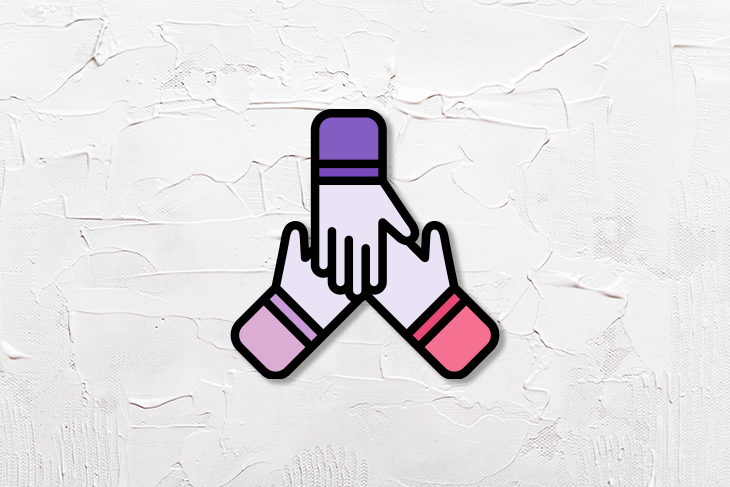Have you ever noticed that your customers are using your product in some way that you had not anticipated or intended? In those moments, have you ever wondered, “Why didn’t we think of this?”

As product managers, when we are developing product strategy and building new feature sets, we’re often trying to make data-driven decisions. But, inevitably, we also end up having to make decisions purely based on assumptions.
How can we validate these assumptions early on in the product lifecycle? Taking it a step further, how can we validate these assumptions with actual qualitative data from people who use the product regularly?
Your most important source of firsthand product feedback is your customers. A great way to obtain feedback is to set up a customer advisory board (CAB).
A customer advisory board is a select group of strategic customers who are familiar with your product or, even better, use your product regularly. Because these customers find value in your product, they are genuinely interested in improving its functionality and user experience. They provide quality product feedback and give better direction to your product strategy.
A customer advisory board is different from other business partners and influencers who don’t actually use your product. While gaining their input could be beneficial to overall product decision-making, their perspective is different from that of actual customers. Aligning with customers early on in the product lifecycle will give you the edge you need to make your product sticky.
A customer advisory board can be more beneficial than other sources of product feedback and/or market insights because it can help you accelerate product growth and get ahead of competitors without expending too many R&D resources.
A customer advisory board enables you to:
The best way to validate assumptions is through real customer feedback. While quantitative data is relatively easier to source through product analytics and does contribute to decision-making, it doesn’t give you a holistic picture.
Qualitative feedback is much more difficult to source, but the customer advisory board can easily fill this gap, enabling you to find answers quickly to unanswered questions. This will help you make better product decisions, leading to better product adoption.
Your customers are in a unique position: they know both your product and the market really well. They can easily describe how your product stands in the current market and how it will fare with upcoming market trends. Tap into this wealth of knowledge.
The sooner you’re able to source this information in your product lifecycle, the sooner you’re equipped to address market trends and stay ahead of competitors. This will either help you validate your current product strategy or prompt you to question it, affording you the opportunity to pivot quickly.
Business 101 directly correlates customer satisfaction with higher revenue. When you listen to your customers and act on their product feedback, you’re showing them that you care — about how they use your product, whether they continue to use the product, and about improving the overall product experience.
When you make customers feel important and show them how special they are, it’s pure magic. They will bring in more revenue than the perfect sales pitch. No matter how many new sales techniques you have, the most traditional and absolutely best way to gain new customers is through trusted customer referrals.
Remember, the goal of a customer advisory board is to give you quality product feedback.
The first step is to analyze your customer base. If you have product analytics set up, grab a list of your most active users. Find the product feature sets that they use the most. Do they line up with your ideal customer profile?
If the answer is yes, you’re well on your way. Identify a cross-section of these users and map them to those client accounts that you think will enable you to make strategic product decisions. Align them as closely with your ideal customer profile as possible and opt for the decision makers.
If the answer is no, don’t fret. Identify a cross-section of users that you think ought to be your ideal customers and focus on those that make strategic sense. Figure out where the discrepancies are and make note of them. Your first goal with the customer advisory board should be to investigate why customers are not using your product as expected.
Setting up a customer advisory board should be strategic, transparent, and straightforward.
Just like any other project, create an action plan to bring together the various moving pieces. Think of it as an ongoing program, one that needs continuous attention and maintenance.
Here are a few steps to get you up and running:
Your customers have limited time to spare, so it’s extremely important to list down the goals of the customer advisory board.
Try to make your goals as specific as possible. For example, instead of having generic goals such as “validate assumptions,” include more detail to describe what kind of assumptions you want to validate. Are they for specific feature sets or for new product ideas? If they are for both, list them out as separate goals.
Your customer advisory board should consist of a small group of your most active users. That’s because a large group is hard to manage — opinions are too diverse and the sense of exclusivity is diminished.
Design specific eligibility rules so you can draw the line on who can be invited and the extent of their participation. Ensure that this is communicated clearly both internally and externally as you start recruiting customers.
Before you recruit customers to your customer advisory board, validate your active users list with your support and sales teams to identify clients/users that are sensitive, are not open to communication, or have had any big issues in the past. Prioritize customers that are more friendly and forthcoming.
Send out personalized email invitations or try getting on the phone with the customer to invite them. Focus on the value that customers will get by participating in the customer advisory board. Be prepared to follow up with customers multiple times before they are convinced to join your advisory board.
Once you’ve recruited customers to join your customer advisory board, work with their schedules to set up interactive sessions.
As much as you want to leverage your customers, it’s important to acknowledge that asking for a customer’s time is asking for their most valuable resource. You need to make it worth their while. Design a mutually beneficial agenda, one where customers might also find value. It could be as simple as giving them a sneak peek of a new feature you’re building.
Prepare a set of questions you want to ask customers. Have a mix of both open- and closed-ended questions, such as:
Try to stick to your prepared questions as much as possible, but don’t hesitate to dig deeper into an interesting insight that wasn’t on your list.
While you divulge into questions that test pricing, adoption, go-to-market strategy, data privacy, etc., watch for hesitation and pull back if the customer is not comfortable to talk about it.
Create a sense of shared future as you converse with customers; make them feel as though they are part of the product.
Acting on product feedback as much as possible and communicating this back to customers showcases commitment and respect, which goes a long way.
You should also incorporate customer feedback into your product strategy, validate hypotheses, and update your processes to ensure that you’re aligned with your customers and business goals.
The customer advisory board is not a one-time event. It is a continuous, ongoing program that needs nurturing and support.
Talk to your customers as much as they are willing to talk to you. Incentivize them to participate by providing exclusive monetary and non-monetary benefits to your advisory board — sales discounts, exclusive beta access to new products, exclusive mentions in your company newsletter, invitations to a corporate event, company swag, gift cards, etc. Get as creative as possible!
A well-planned, well-organized, and well-communicated agenda can help you ensure a productive customer advisory board session that benefits both your business and the participants.
Some important elements to include in your customer advisory board agenda include:
Customers are often willing to give you a lot of information if you are patient enough for it. First, though, you have to win their trust. Listen to your customers with an open mind, ask them follow up questions, and get solution recommendations from them.
Customers can guide your product direction and may even have information on your competitors that you could leverage. If you have an idea, try and validate it by asking for their opinions and other ideas that could potentially take your product to the next level.
You will soon start to see a pattern of customer needs that will inform your product strategy. The stronger your product strategy, the deeper relationships you can have with your strategic client accounts. Soon, you can start championing select members of your advisory board to become evangelists of your product.
When you meet with your customer advisory board, remember this is about them giving you their feedback. It’s not a sales pitch where you are selling new products to them.
It’s important to make this distinction to create an atmosphere of transparency and trust. As soon as you start “selling” your product, customers tend to pull back and not give you information they would otherwise give you willingly.
Customers don’t owe you anything; they are spending their precious time to help you improve your product. While they might have vested interest in this, don’t take their time for granted. Avoid unplanned meetings and unrelated topic divergence as much as possible
Also, don’t dehumanize customer interactions. At the end of the day, your customers are still people. Talk to them in a conversational manner rather than approaching the interaction like a business transaction. Ask them about their day, empathize with them, or tell a joke to lighten the mood.
If done right, your customer advisory board can become your biggest asset. There’s nothing better than your own customers telling you what to build, how to build, when to build, and then validating how much they are willing to pay for it.
Collaborate cross-functionally with other client-facing teams to support your customer advisory board and find common goals that you can achieve.
It’s not just how well you create your product and how great your user experience is; it’s also about how you treat your customers. Treat them with respect and they will do the same to you.
The truth is you can’t make every single customer happy, but can you connect the dots to find ways to substantially increase customer satisfaction and refine your product strategy? That’s all that matters at the end of the day.
While you’re creating your customer advisory board, have fun! Believe me, it’s contagious.
Featured image source: IconScout
LogRocket identifies friction points in the user experience so you can make informed decisions about product and design changes that must happen to hit your goals.
With LogRocket, you can understand the scope of the issues affecting your product and prioritize the changes that need to be made. LogRocket simplifies workflows by allowing Engineering, Product, UX, and Design teams to work from the same data as you, eliminating any confusion about what needs to be done.
Get your teams on the same page — try LogRocket today.

Michal Ochnicki talks about the importance of ensuring that the ecommerce side of a business is complementary to the whole organization.

Christina Valls shares how her teams have transformed digital experiences at Cedars-Sinai, including building a digital scheduling platform.

Red-teaming reveals how AI fails at scale. Learn to embed adversarial testing into your sprints before your product becomes a headline.

Cory Bishop talks about the role of human-centered design and empathy in Bubble’s no-code AI development product.